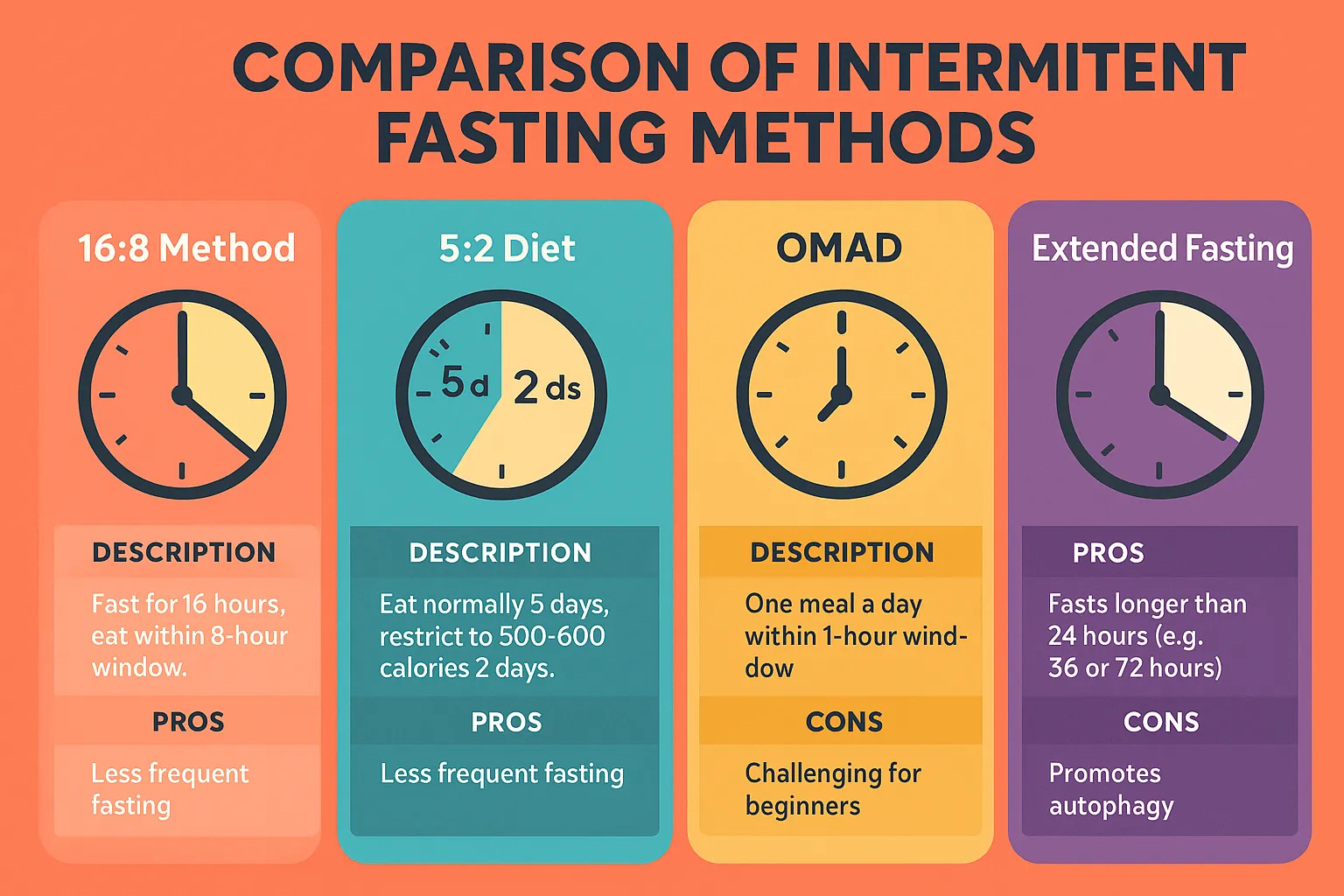What is Intermittent Fasting?
Intermittent fasting (IF) is an eating pattern that alternates between periods of fasting and eating. Unlike traditional diets, IF focuses on when you eat rather than what you eat, making it a flexible approach to health and weight management. Fasting has been practiced for centuries across cultures for religious, spiritual, and health purposes (Mayo Clinic).
For beginners, IF can feel daunting, but it’s adaptable to various lifestyles. Whether you’re aiming for weight loss or better metabolic health, starting with a simple method can build confidence. Our Fasting Timer can help you time your fasts accurately.

Popular Fasting Methods
There are several intermittent fasting methods, each with unique benefits. Here’s a comparison to help you choose:
| Method | Description | Pros | Cons |
|---|---|---|---|
| 16:8 Method | Fast for 16 hours, eat within an 8-hour window. | Easy for beginners, flexible. | May require meal planning. |
| 5:2 Diet | Eat normally 5 days, restrict to 500-600 calories 2 days. | Less frequent fasting. | Calorie counting needed. |
| OMAD | One meal a day within a 1-hour window. | Maximizes fasting benefits. | Challenging for beginners. |
| Extended Fasting | Fasts longer than 24 hours (e.g., 36 or 72 hours). | Promotes autophagy. | Requires medical supervision. |
Try the 16:8 Calculator, 5:2 Calculator, OMAD Calculator, or Extended Fasting Calculator to plan your fasts.
Benefits of Intermittent Fasting
Fasting offers benefits like weight loss, improved insulin sensitivity, and enhanced cellular repair. Studies suggest IF can reduce inflammation and improve heart health (Healthline). For a deeper dive, explore our Health Benefits Guide.
“Fasting has been a game-changer for my energy and focus. Starting with 16:8 was simple and sustainable!” – Sarah, IF beginner.
Tips for Beginners
- Start with shorter fasts, like 12:12 or 14:10, to build habits.
- Stay hydrated with water, tea, or black coffee during fasting periods.
- Eat nutrient-dense foods like vegetables and lean proteins during eating windows.
- Use our Fasting Hours Tracker to monitor progress.
- Listen to your body and adjust if you feel unwell.
- Consult a doctor before fasting, especially if you have medical conditions.
Ready to plan your fasts? Check out our Fasting Schedule Guide for tips on creating a routine.